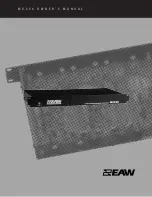
59
Upon initialization of a network, each device generates and periodically sends configuration BPDUs,
with itself as the root bridge. After network convergence, only the root bridge generates and
periodically sends configuration BPDUs. The other devices only forward the BPDUs.
Root port
On a non-root bridge, the port nearest to the root bridge is the root port. The root port communicates
with the root bridge. Each non-root bridge has only one root port. The root bridge has no root port.
Designated bridge and designated port
Classification
Designated bridge
Designated port
For a device
Device directly connected to the local device
and responsible for forwarding BPDUs to the
local device
Port through which the designated
bridge forwards BPDUs to this device
For a LAN
Device responsible for forwarding BPDUs to
this LAN segment
Port through which the designated
bridge forwards BPDUs to this LAN
segment
As shown in
, Device B and Device C are directly connected to a LAN.
If Device A forwards BPDUs to Device B through port A1, the designated bridge and designated port
are as follows:
•
The designated bridge for Device B is Device A.
•
The designated port for Device B is port A1 on Device A.
If Device B forwards BPDUs to the LAN, the designated bridge and designated port are as follows:
•
The designated bridge for the LAN is Device B.
•
The designated port for the LAN is port B2 on Device B.
Figure 18 Designated bridges and designated ports
Path cost
Path cost is a reference value used for link selection in STP. To prune the network into a loop-free
tree, STP calculates path costs to select the most robust links and block redundant links that are less
robust.
Calculation process of the STP algorithm
The spanning tree calculation process described in the following sections is a simplified process
presented only as an example.
Содержание H3C S7500E-X
Страница 70: ...57 ...
















































